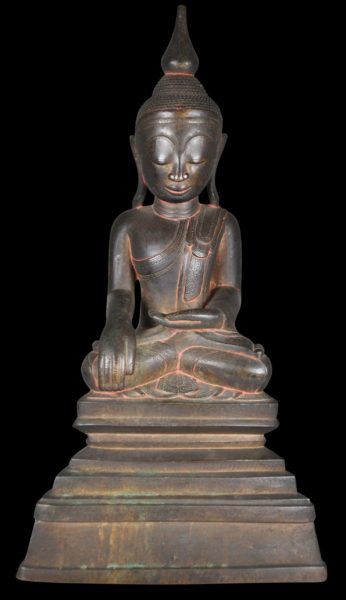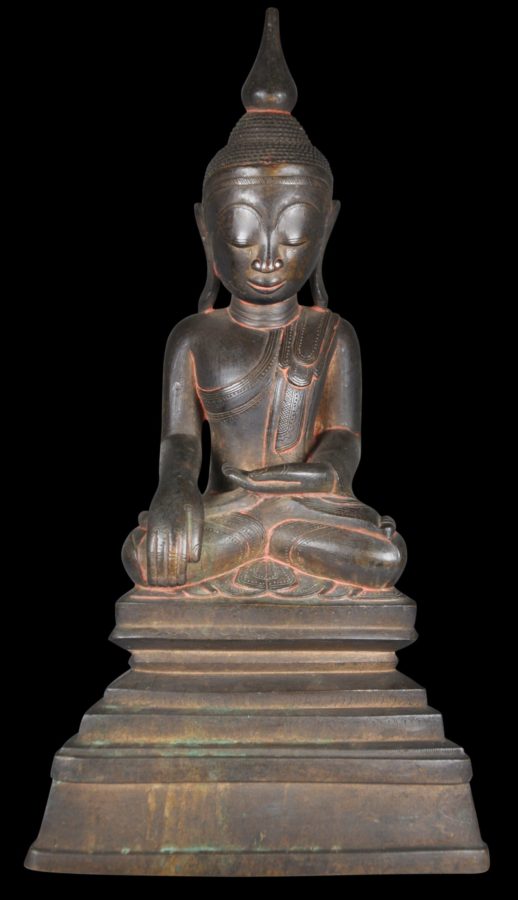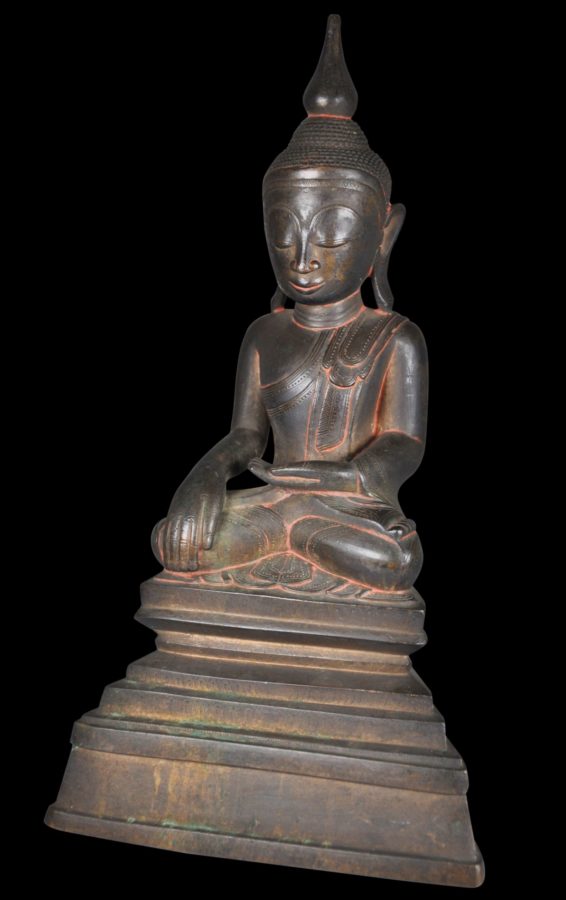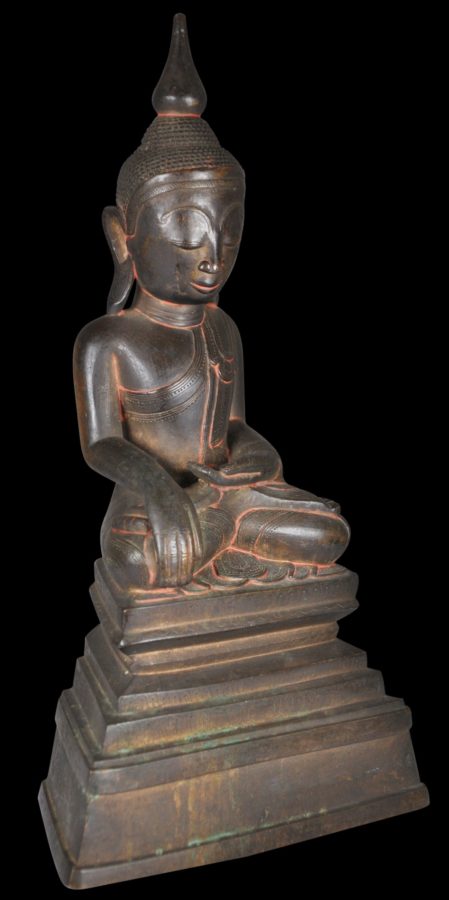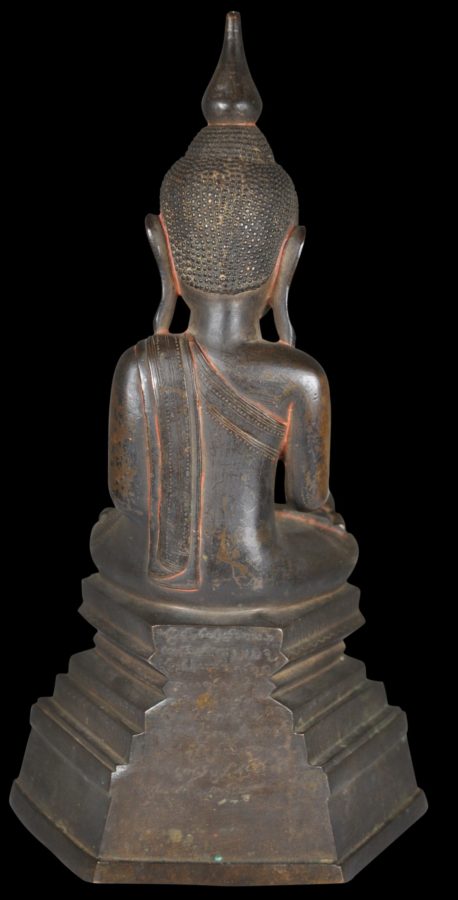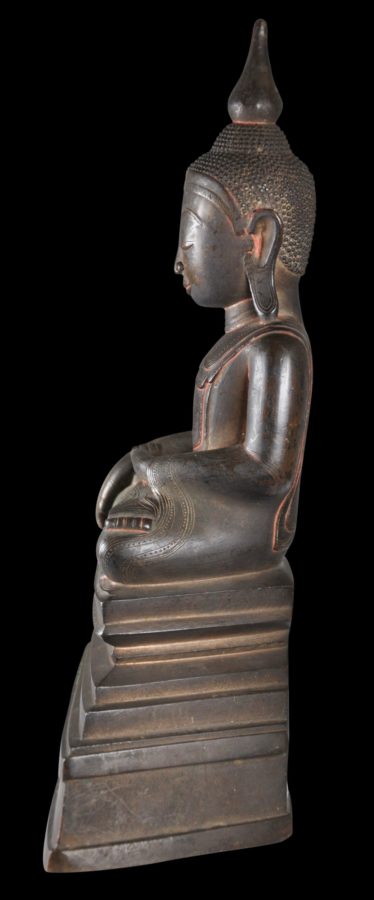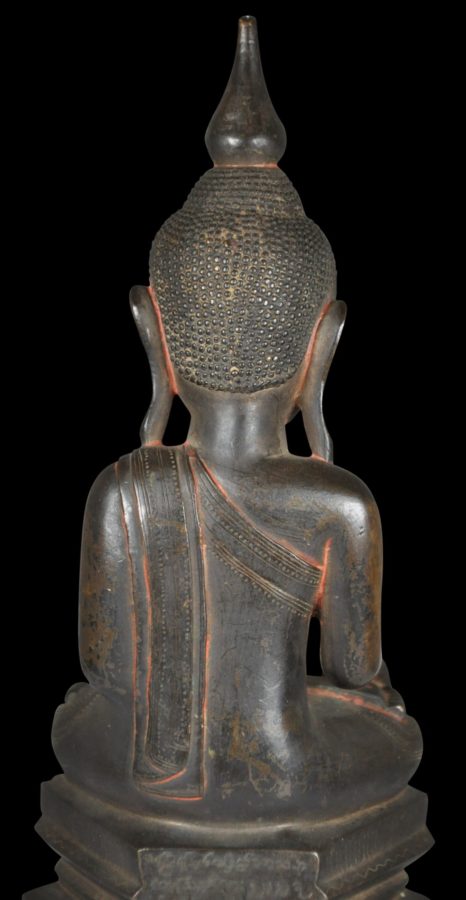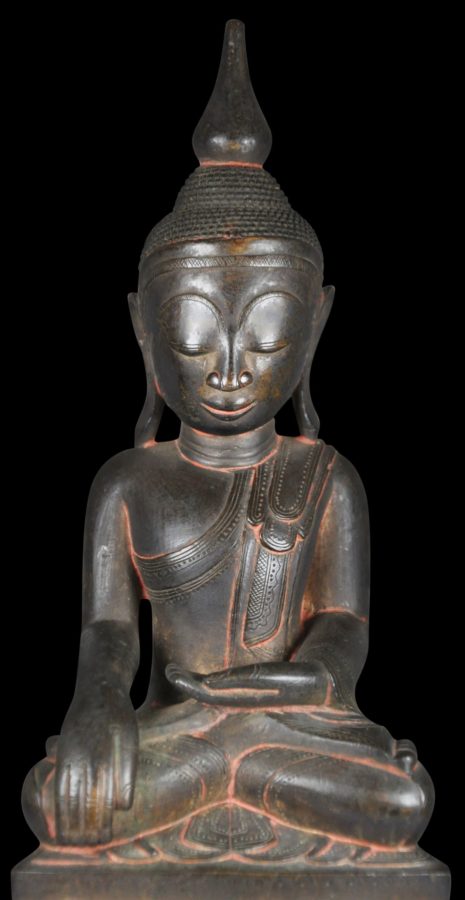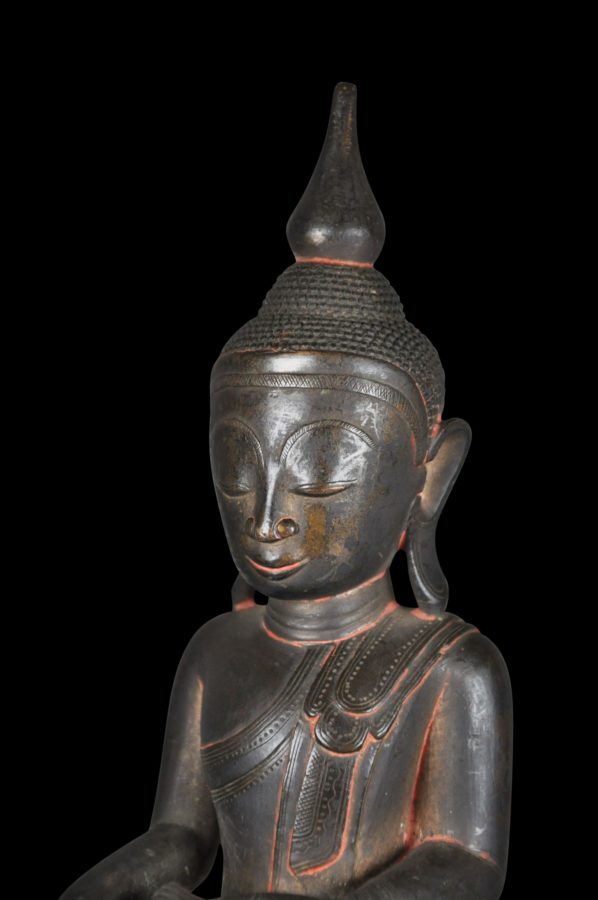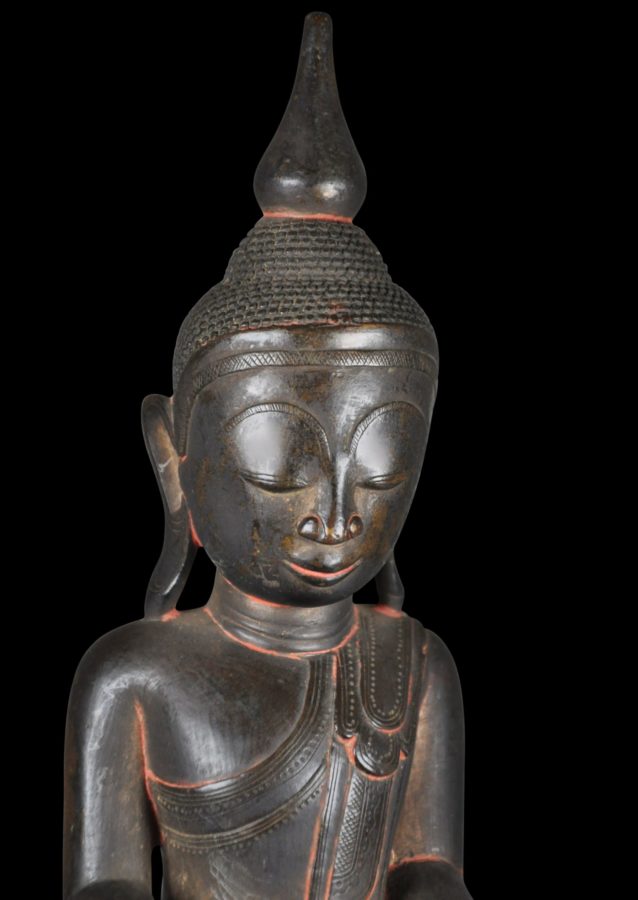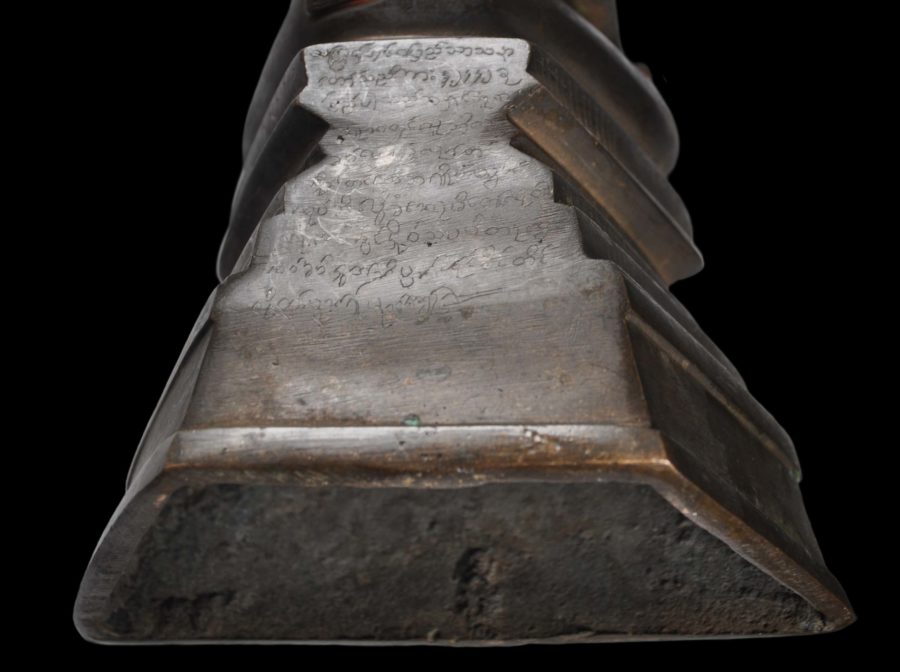This elegant Buddha image has been cast from bronze in the Shan style.
It has a superb patina and a particularly pleasing face with fine features.
The image sits cross-legged in Bhumisparsa mudra pose on a tall, tiered throne, and has been cast with the elongated features often seen among Shan Buddha images.
The head bends slightly forward, and the eyes are closed in meditation. The nose is prominent and wide. The lips are pursed and in a slight smile.
The ears are elongated and reach to the shoulders. As such they are a reminder of the Buddha’s princely origins.
The hairstyle is akin to neat rows of peppercorns. The head is surmounted by an elongated, bud-like ushnisha. This type is unique to Burma and first appeared in the seventeenth century.
The image wears the robes of a monk. They have however been embellished with some border decoration – incised after casting. They are adorned with multiple sashes. The right shoulder has been left bare.
The image sits on a high, tiered throne. Such thrones are characteristic to Burmese and Shan Buddha thrones.
The reverse of the throne has been incised with a lengthy inscription either in Burmese or Shan and undoubtedly names the donor of the image.
Traces of red colouring in the grooves suggest that the image might once have been coloured in gold leaf or lacquer.
The image is in excellent condition. It is a far better images than most in this style and of this period.
References
Green, A., (ed.), Eclectic Collecting: Art from Burma in the Denison Museum, NUS Press, 2008.
Karow, O., Burmese Buddhist Sculpture: The Johan Moger Collection, White Lotus, 1991.
Lowry, J., Burmese Art, Victoria and Albert Museum, 1974.
Somkiart Lopetcharat, Myanmar Buddha: The Image and its History, Siam International Books Company, 2007.


